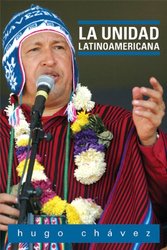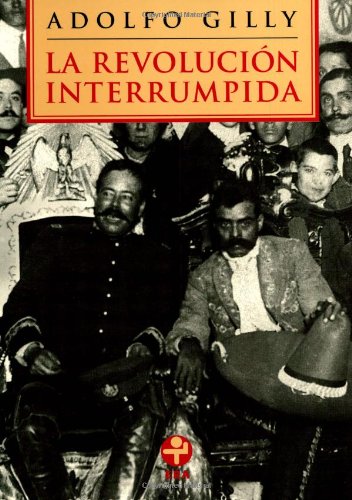In March 1911, Emiliano Zapata and other local peasant leaders of the state of Morelos organized the armed appropriation of several haciendas, thus beginning what would become the Southern Liberation Army, recognized by Madero as the southern army of the revolution. The state of Morelos had been a stronghold of peasant resistance, because there were many free villages, beyond the terrain of the haciendas, that had retained or sought to recover their lands, and because there was a sizeable and concentrated agricultural proletariat formed by the extensive sugar plantations in the state. By May, Zapata’s forces numbered 4000, armed with weapons captured from the haciendas and the federal army. They took the town of Cuautla on May 10, establishing headquarters there, and on the following day, they entered Cuernavaca, the Morelos state capital, without encountering resistance from the federal army. They proceeded to develop guerrilla units, utilizing a variety of strategies to attack the federal army (Gilly 2005:56-67).
Emiliano Zapata was born into a peasant family on August 8, 1879. He was neither rich nor poor by peasant standards, and he had acquired a solid and trustworthy reputation among the local peasants on the basis of his involvement in animal trading and horse-breaking. Due personal qualities increasingly recognized by peasants in arms, he emerged as the leader of the Southern Liberation Army (Gilly 2005:62, 66).
On November 28, 1911, fifty-nine officers of the Zapatist army, who constituted the Revolutionary Council of the State of Morelos, signed the so-called Ayala Plan, which would function as the political expression of the nationwide peasant revolution. It was written by Zapata and Otilio Montaño, a local schoolteacher who had joined Zapata’s forces at the beginning. In reaction to Madero’s pact with Porfirio Díaz of May 2011 (see “The Mexican Revolution” 2/3/2014), the Ayala Plan declared Madero to be a traitor to the revolution; it no longer recognized him as President of the Republic, and it called for his overthrow. The Plan also condemned the usurpation of land from villages and peasants under Porfirio Díaz, and it called for the restoration of land to villages and citizens possessing deeds. It called for the appropriation of large haciendas, with partial compensation, for distribution as common land and individual property. It called for the nationalization of the haciendas of the landholders who oppose the Ayala Plan. Rather than advocating the eventual distribution of land after ownership is established in court, the Ayala Plan called for the immediate seizing of land by armed peasants, with the provision that the previous landholder could subsequently challenge the seizure in revolutionary court. Unlike bourgeois proposals for land reform, designed to pacify the peasantry, the Ayala Plan was extensive and immediate, and the burden of proof was placed on the large hacienda owners who had acquired land during the Porfirist era (Gilly 2005:69-72, 130-32).
As we observe the various popular revolutions of the twentieth and twenty-first centuries, we see the phenomenon of the emergence of charismatic leaders who possess exceptional qualities of leadership and understanding rooted in a commitment to universal human values (see “Toussaint L’Ouverture” 12/10/2013; “The problem of dependency” 12/11/2013; “Toussaint seeks North-South cooperation” 12/12/2013; “The isolation and poverty of Haiti” 12/17/2013; “Lessons from the Haitian Revolution” 12/18/2013; “The social & historical context of Marx” 1/15/2014; “Reflections on the Russian Revolution” 1/29/2014).
Gilly describes the charismatic authority possessed by Zapata: “It is a remarkable fact that the political leadership of the southern revolution was concentrated in the person of Emiliano Zapata. Many historians and commentators have tried to deny this. . . . They find it inadmissible or intolerable that a peasant, rather than a ‘cultured’ person, should be the main leader of a revolution. But the peasants of Morelos were never in any doubt about the true head of the movement. They saw themselves exercising power through Zapata, just as they exercised local power in the villages [as we will see in a subsequent post]. It was this which gave Zapata . . . an authority over the peasant officers and soldiers that was based on their complete trust.
“Emiliano Zapata’s role in the revolution was part of the confident, self-assertive drive of the Mexican peasantry to run their own lives and determine the country’s fate. For this reason, his figure transcends the borders of Mexico and, alongside that of Pancho Villa, stands as a universal symbol of the agrarian revolution” (Gilly 2005:292).
Zapata, however, was a charismatic leader of an agrarian revolution, not a popular revolution. All human knowledge possesses a social foundation, and the social context of Zapata’s understanding pertained to the countryside, and not to the nation as a whole. Recognizing this limitation, when in a position of military and political control of the nation, Zapata turned power over to the petit bourgeoisie, with the hope that they would possess the political capacity, the intellectual understanding, and the moral commitment to direct the nation in accordance with the needs and interests of the various popular classes and sectors. As we have observed, the radical Mexican petit bourgeoisie of 1914 was not prepared for this task (see “Peasant armies occupy Mexico City, 1914” 2/5/2014).
After the triumph of reformism at the national level in 1915, Zapata and Zapatism continued to be the dominant force in the state of Morelos until 1919. Under Zapatist control, alternative political structures were established in Morelos. These are themes that we will address in subsequent posts.
References
Gilly, Adolfo. 2005. The Mexican Revolution. New York: The New Press. (Originally published as La Revolución Interrumpida by El Caballito, Mexico, in 1971).
Key words: Third World, revolution, colonialism, neocolonialism, imperialism, democracy, national liberation, sovereignty, self-determination, socialism, Marxism, Leninism, Cuba, Latin America, world-system, world-economy, development, underdevelopment, colonial, neocolonial, blog Third World perspective, Mexican Revolution, Zapata, Zapatist






 RSS Feed
RSS Feed





